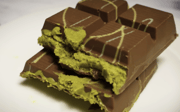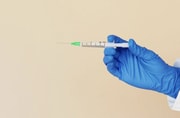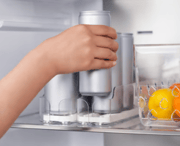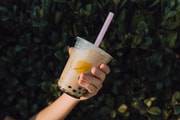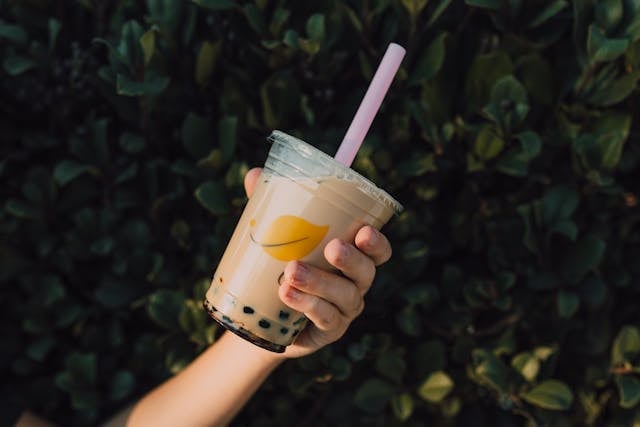
If your grandchildren have been sipping colourful drinks filled with chewy black pearls through oversized straws, you might want to pay attention to some concerning new research.
These beverages, known as bubble tea or boba, have become wildly popular with young Australians. Yet, recent tests have revealed an unexpected ingredient lurking in those signature pearls.
The trendy drink, which combines tea with milk and distinctive chewy spheres, has exploded across Australia in recent years.
But Consumer Reports has discovered that every single bubble tea sample they tested contained detectable levels of lead—a finding that should concern anyone with loved ones regularly consuming these drinks.
The troubling test results
Consumer Reports tested tapioca pearls from major chains including Gong Cha and Kung Fu Tea, along with packaged products from Trader Joe's and WuFuYuan, finding detectable lead levels in all four products tested. The results varied significantly by brand, with some samples containing particularly concerning amounts.
The highest lead levels appeared in Trader Joe's Instant Boba Kit at 83% of Consumer Reports' safety threshold, followed by Gong Cha's pearls at 70%, Kung Fu Tea at 63%, and WuFuYuan at 29%.
While none exceeded the organisation's safety limits, three out of four samples contained more than 50% of their level of concern for lead in a single serving.
The contamination stems from cassava, the root vegetable used to make tapioca pearls.
Cassava is known to absorb lead and other heavy metals from soil, a natural process that concentrates these substances in the final product.
Understanding the health implications
For older Australians, this news carries particular weight—not just for your own occasional indulgence, but for the regular consumption patterns you might observe in younger family members.
Health experts emphasise that no amount of lead is considered safe, with risks being greatest for children and pregnant people.
Lead exposure is linked to serious long-term health problems including high blood pressure, kidney damage, and cardiovascular issues in adults.
What makes this particularly concerning is the cumulative nature of lead exposure—small amounts from various sources can add up over time and may have health effects in the long run.
The popularity problem
The timing of these findings is significant given bubble tea's explosive growth.
In 2024, there were 6,635 bubble tea shops across the United States, with that number expected to double by 2028. While specific Australian figures weren't available, the trend mirrors what many grandparents have observed—these colourful drinks have become a regular part of young people's social routines rather than occasional treats.
Did you know?
Bubble tea originated in Taiwan in the 1980s and typically contains brewed tea, milk or creamer, sweetener, and chewy tapioca pearls made from cassava root. The drink is served in clear cups with oversized straws to accommodate the pearls, and comes in countless flavour combinations.
Learn about the history of bubble tea here:
Source: Aptent Digital/YouTube
A balanced approach to the risk
Consumer Reports' food safety director James E. Rogers emphasises that while these levels weren't high enough to recommend complete avoidance, the fact that lead was detected in all products tested makes it 'a good reason to treat it as an occasional treat, not an everyday staple'.
This distinction between occasional and regular consumption is crucial.
A single serving of bubble tea per day would remain within safety thresholds, but because lead can come from many different sources in an everyday diet, levels can build up quickly.
Foods that help counter lead exposure
While avoiding unnecessary lead exposure is ideal, there's encouraging news about nutrients that can help.
Eating enough calcium, iron, selenium, vitamin C, and zinc could help reduce the body's absorption of lead. Nutrients including calcium, iron, and vitamin C may help counter some effects of lead exposure.
Protective nutrients against lead absorption
- Calcium (dairy products, leafy greens, sardines)
- Iron (red meat, spinach, lentils)
- Vitamin C (citrus fruits, berries, capsicum)
- Zinc (oysters, beef, pumpkin seeds)
- Selenium (Brazil nuts, tuna, eggs)
Industry responses and what's changing
The findings have prompted some immediate action.
Trader Joe's informed Consumer Reports that it has discontinued its Instant Boba Kit, while WuFuYuan's parent company stated they 'take the safety of our products very seriously' and have implemented more stringent testing standards.
However, major chains Gong Cha and Kung Fu Tea did not reply to Consumer Reports' request for comment, leaving questions about their response to these findings.
The bigger picture on lead exposure
It's worth noting that bubble tea isn't the only concern.
Consumer Reports recommends treating bubble tea and dark chocolate, which can also be higher in lead, as occasional indulgences only.
It's impossible to completely avoid lead exposure since it can be found in a variety of foods, including healthy ones, and daily exposure can add up.
Rather than panic, this research calls for practical adjustments.
While you don't have to give up bubble tea entirely, it's best not to make it part of a daily routine. Beyond lead concerns, bubble tea drinks often contain high levels of sugar and calories, providing additional reasons to limit consumption.
Eating a variety of healthy foods may help reduce overall heavy metal exposure, making this an opportunity to discuss broader nutrition with younger family members who might be regular bubble tea consumers.
If your grandchildren are daily consumers, it might be worth a gentle conversation about treating these drinks more like dessert than a regular beverage.
What are your thoughts on this bubble tea trend? Have you noticed young family members making these drinks a daily habit? Share your observations and any questions about food safety for the next generation in the comments below.


